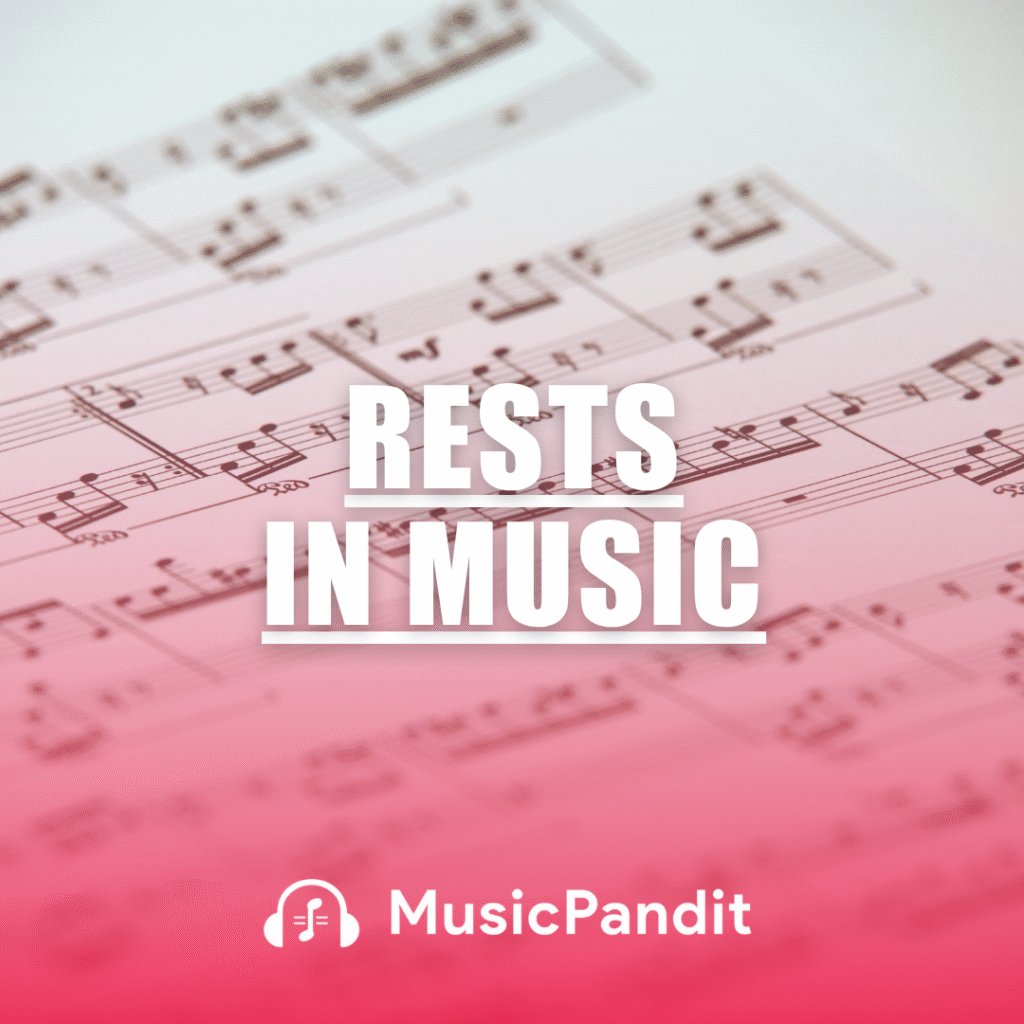When we think of music, we often focus on melodies, harmonies, and rhythms. But there’s another crucial element that shapes music in profound ways—silence. In written music, this silence is represented by rests. Far from being passive pauses, rests play an active role in musical expression, structure, and storytelling. In this article, we explore everything you need to know about rests in music—what they are, how they work, and why they matter.
What Are Rests in Music?
In simple terms, rests are symbols in musical notation that indicate a period of silence. Just as notes tell a musician when and what to play, rests instruct them when not to play. Every note duration—whole, half, quarter, eighth, and so on—has a corresponding rest symbol of the same length.
Understanding rests is essential for performers to maintain accurate rhythm and timing, whether playing solo or with an ensemble.
Why Are Rests Important?
Rests are much more than empty spaces. Here’s why they’re essential:
- Create Rhythm and Structure: Rests break up continuous sound, adding shape and rhythm to music.
- Build Tension and Release: Silence can be used dramatically to pause before a big moment, making the impact even more powerful.
- Allow Breathing Space: Especially in vocal or wind instrument music, rests give performers time to breathe or reset.
- Enhance Musical Expression: The absence of sound can sometimes be more expressive than sound itself.
In essence, rests are not just gaps—they are intentional silences that enhance musical storytelling.
Types of Rests in Music
Every rest corresponds to a specific note value. Here’s a breakdown of the most common types:
1. Whole Rest (Semibreve Rest)
- Symbol: A filled-in rectangle hanging from the second line from the top of the staff.
- Duration: 4 beats (in 4/4 time).
- Usage: Often used to indicate a full measure of rest in any time signature.
2. Half Rest (Minim Rest)
- Symbol: A filled-in rectangle sitting on the middle line of the staff.
- Duration: 2 beats (in 4/4 time).
3. Quarter Rest (Crotchet Rest)
- Symbol: A squiggly line.
- Duration: 1 beat (in 4/4 time).
- Note: One of the most frequently used rests in modern music.
4. Eighth Rest (Quaver Rest)
- Symbol: A single hook.
- Duration: ½ beat.
5. Sixteenth Rest (Semiquaver Rest)
- Symbol: A double hook.
- Duration: ¼ beat.
6. Thirty-Second and Sixty-Fourth Rests
- Symbol: Triple or quadruple hooks.
- Duration: These are shorter rests for very quick notes, typically used in advanced music.
Multimeasure Rests
In orchestral or ensemble music, when a player is silent for many measures, a multimeasure rest is used. It’s shown as a horizontal line with the number of bars of rest written above it. This keeps the score clean and readable.
Rests in Different Time Signatures
Rests adapt based on the time signature:
- In 4/4, a whole rest covers four beats.
- In 6/8, a dotted quarter note equals one beat, so rests are grouped accordingly.
- Compound time signatures may require combinations of rests to match the beat structure.
Understanding the time signature helps interpret rests correctly and stay in sync with the rhythm.
Using Rests for Musical Expression
Composers use rests to guide the mood and intensity of music. Here are a few examples:
- Dramatic Pause: A sudden rest can create suspense, like a cliffhanger in a story.
- Syncopation: In styles like jazz or funk, rests are used to shift emphasis and create complex rhythms.
- Call and Response: Rests allow musical “conversation” between instruments or voices.
Even in fast-paced music, well-placed rests can create punch and clarity.
Common Mistakes Students Make with Rests
When learning music, students sometimes treat rests as throwaway moments. Here’s what to watch out for:
- Skipping Over Rests: Not observing rests can throw off the rhythm.
- Not Counting Properly: Rests require internal timing—counting silently is key.
- Ignoring Short Rests: Even a sixteenth rest matters! Precision is important, especially in ensemble playing.
How to Practice Reading and Performing Rests
Here are a few tips for mastering rests:
- Clap Rhythms Including Rests: Practice clapping exercises that include both notes and rests.
- Use a Metronome: Count beats precisely, staying silent during rest durations.
- Listen Actively: Notice where professional musicians use silence effectively.
- Practice with a Partner: Ensemble practice teaches the value of well-timed silence.
Famous Examples of Rests in Music
Some compositions are famous for their use of silence:
- Beethoven’s Symphony No. 5: The iconic rhythm includes rests that add power to the “short-short-short-long” motif.
- John Cage’s 4’33”: Perhaps the most extreme example, this piece consists entirely of rests, challenging our perception of what music is.
Rests in Modern Music Genres
From pop to jazz to EDM, rests are widely used:
- Pop: Artists like Billie Eilish use silence to create mood and texture.
- Jazz: Rests help with swing and syncopation, creating space in solos.
- Electronic Music: Drops often rely on a rest right before the beat returns.
Regardless of genre, rests help shape groove, tension, and resolution.
Teaching Rests to Kids
Teaching rests to children can be fun and interactive:
- Use hand signs or gestures for different rests.
- Play “freeze” games where kids move to music and freeze during silent parts.
- Include visual aids and games in lessons to reinforce rhythm.
This helps children internalise both sound and silence as musical tools.
Final Thoughts: Music Isn’t Just About the Notes
In music, silence is golden. Rests provide balance, structure, and emotion. Whether you’re a beginner learning quarter rests or an advanced performer navigating syncopation, understanding and respecting rests is crucial to becoming a well-rounded musician.
At Music Pandit, we believe that every beat matters—even the silent ones. Through engaging lessons, interactive tools, and structured practice, we help students not just play notes but understand music deeply. Want to explore rhythm, rests, and more? Join our classes and discover the full power of musical expression.
Source:https://www.musicpandit.com/resources/articles/rests/

